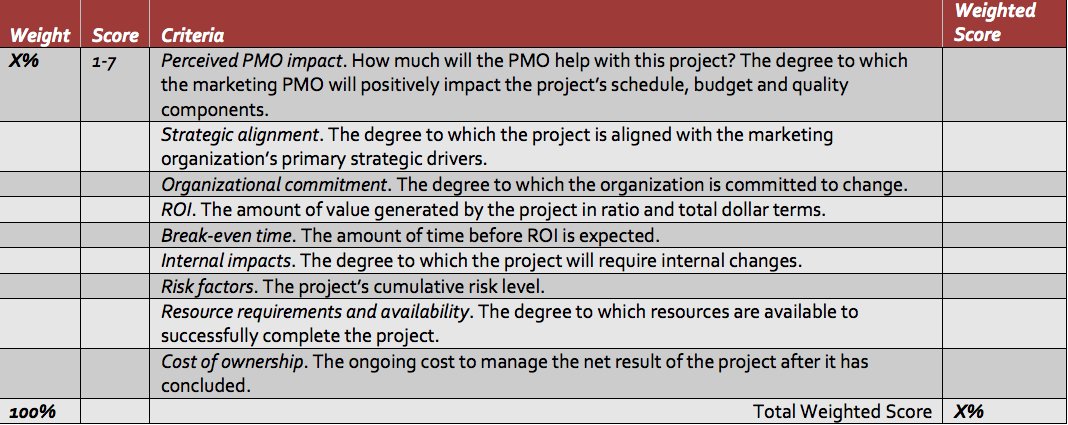Marketing Operations: Project Acceptance
One key to success for marketing operations involves clearly defining each project – what it is and what it can’t be. We often refer to operations as the land of misfit projects, where jobs that no one else wants to do seem to land. Not only does this dilute what marketing operations can be, but it also diminishes the function’s potential to be a critical source of accurate, correct decisionmaking.
With this in mind, many organizations have created a project management office (PMO) that defines and enforces project management standards. The PMO’s primary goal is to improve project delivery in terms of schedule, quality and budget. Since this function is starting to crop up in marketing operations teams, we are often asked how marketing operations should manage the project acceptance process. We recommend using phase gating and prioritizing projects using a project prioritization framework.
Phase Gates
A project submitted to a marketing operations team should pass through several gates before it is considered and prioritized for execution. This ensures that basic project criteria are in place. Phase gates include:
- Core focus. The marketing organization is one of the primary beneficiaries of the project.
- Formal approval. Senior marketing leadership (as defined by the organization) has sponsored the project.
- Core team. A core team has been assigned to the project.
- Resources. Marketing leadership has allocated appropriate resources (equipment, budget) to the project. Since detailed resource requirements are not known at inception, this is a judgment call.
- Project charter. A project charter (using the corporate template) has been completed that specifies the scope of the project, impact and risk factors.
- Duration and effort. The estimated project duration includes a timeframe of more than two weeks and more than 80 hours of estimated work effort.
Prioritization
After a project passes through the phase gates, it can be assessed and prioritized against other current and upcoming projects. There are three components to this assessment:
- Weight project criteria. Determine the relative importance of project criteria to the organization. For example, is risk more important than schedule? Develop a scoring framework (see graphic). The weighted criteria must total 100 percent.
- Score the projects. Evaluate each project against the scoring framework using a scale of one to seven. Then calculate the project’s weighted score.
- Prioritize the projects. Prioritize the projects based on the weighted scores.
Sample Marketing Project Prioritization Framework 